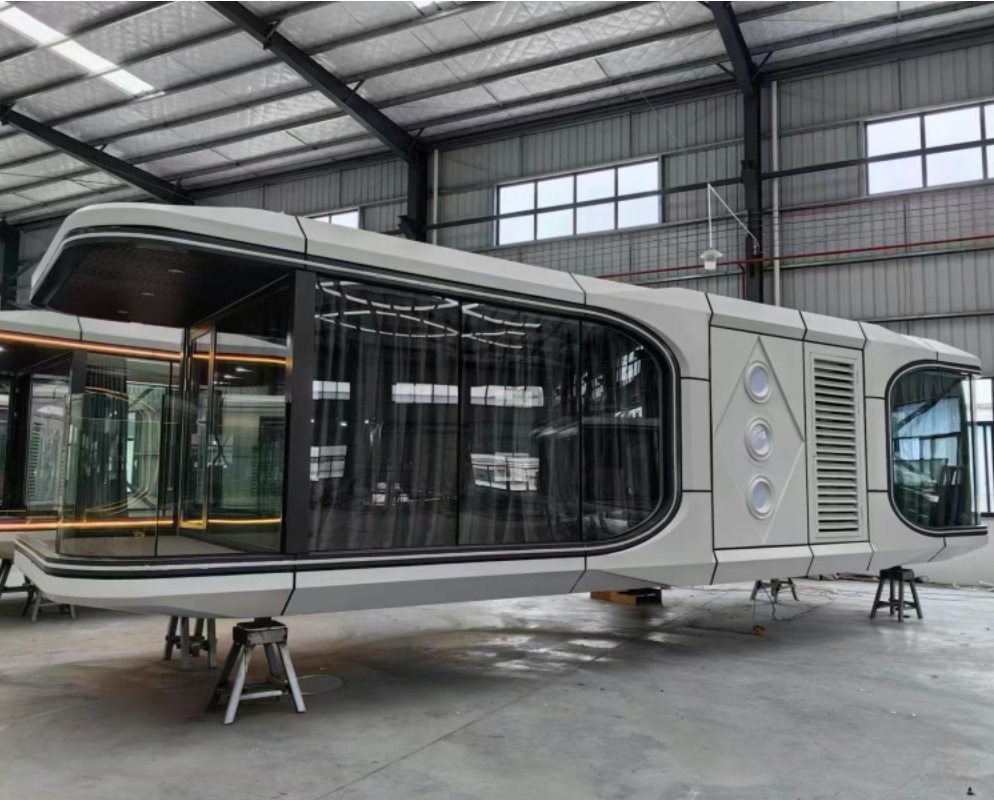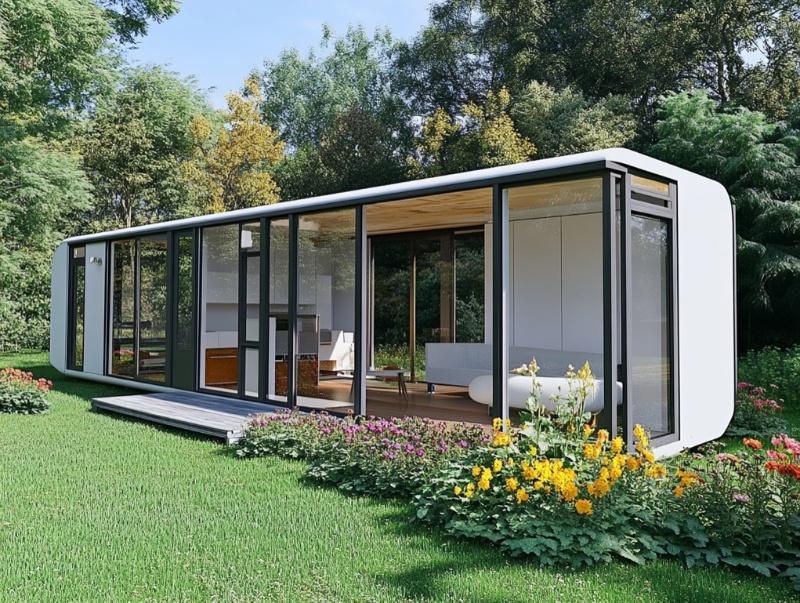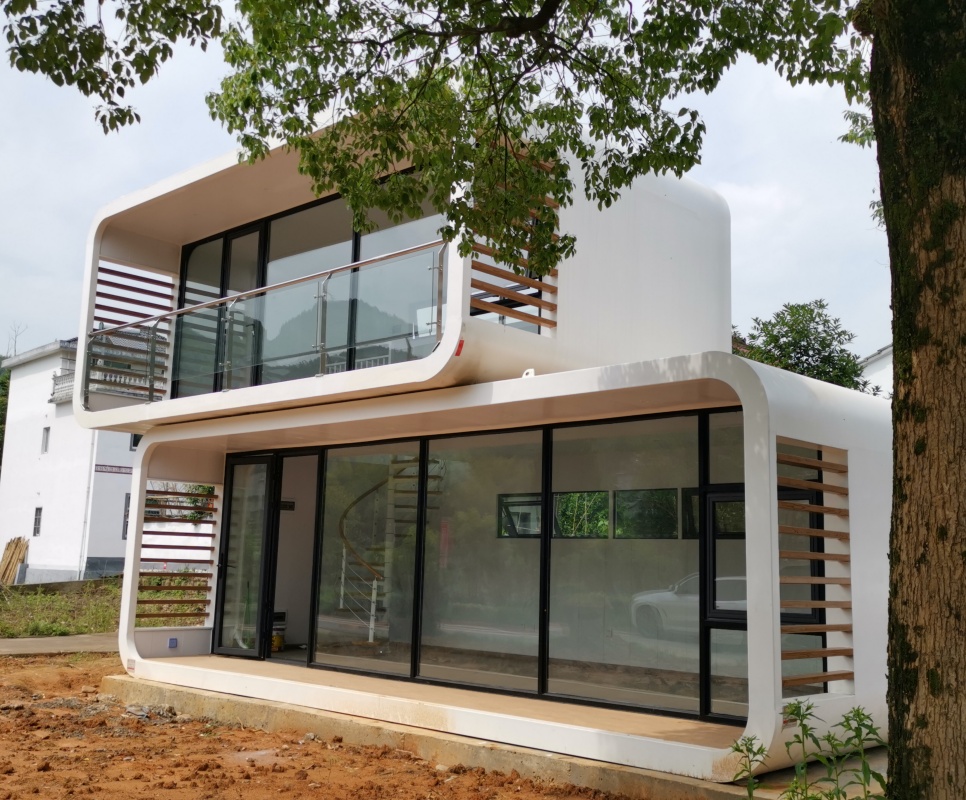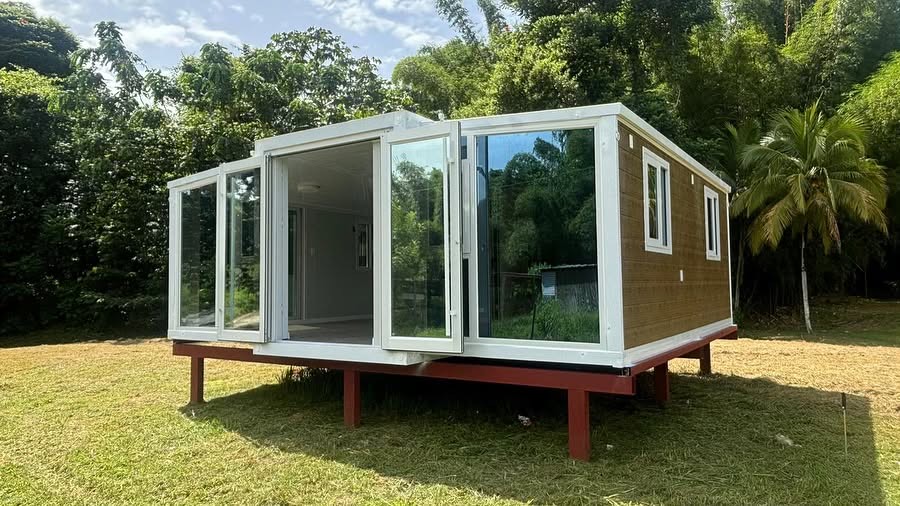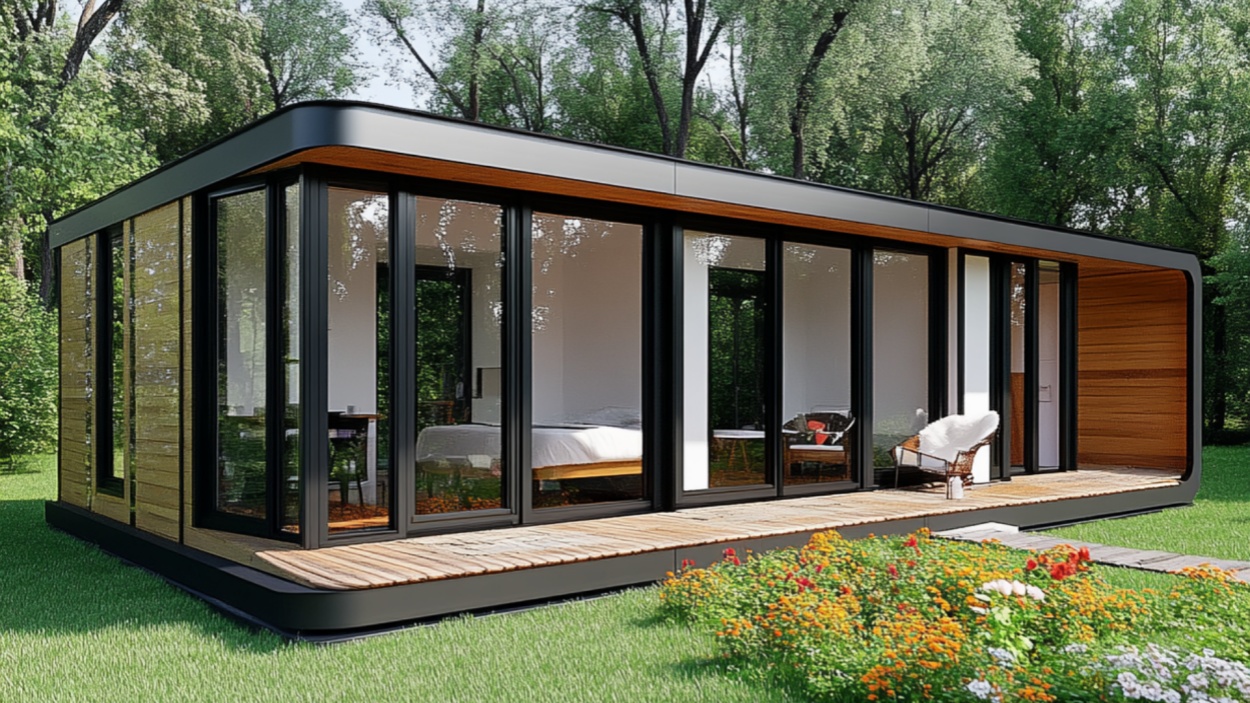Blog
Smart Farming in a Box: Container-Based Digital Circular Agriculture Solutions
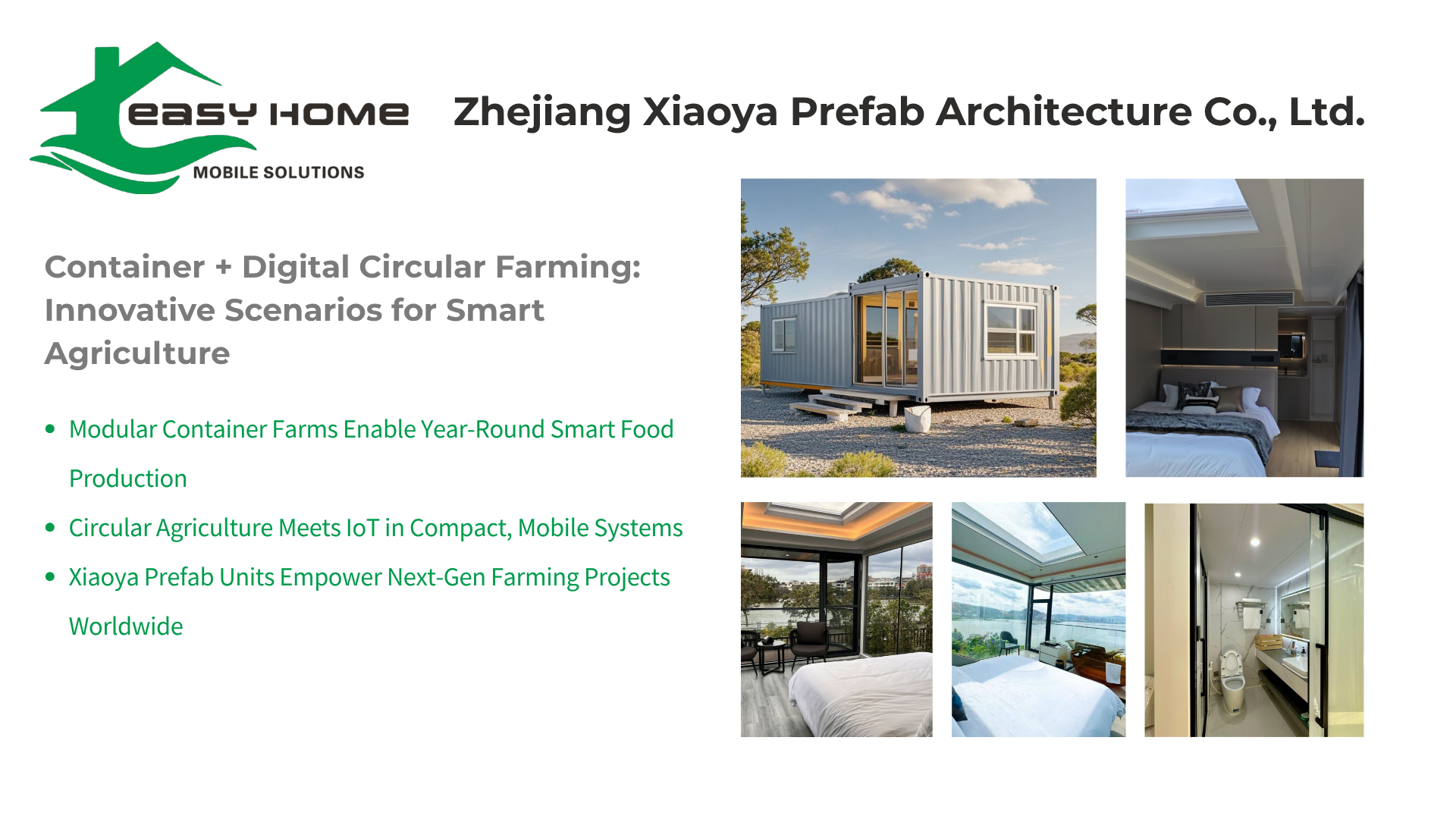
Table of Contents
-
Introduction: Farming Beyond the Field
-
What Is Digital Circular Agriculture?
-
Why Containers? Benefits of Modular Farming Infrastructure
-
Use Case 1: Urban Rooftop Farms & Smart Cities
-
Use Case 2: Off-Grid Agriculture in Remote or Desert Regions
-
Use Case 3: Community Farming in Rural Villages
-
Aquaponics, Hydroponics, and Vertical Farming Inside a Container
-
Real-Time Monitoring: IoT Sensors and Automation
-
Energy Systems: Solar, Battery, and Thermal Optimization
-
Water & Nutrient Recycling in Closed-Loop Systems
-
Xiaoya Group’s Prefab Farming Container Solutions
-
Regulatory and Food Safety Compliance
-
Cost Efficiency, ROI, and Operational Models
-
Future Trends: AI, Data-Driven Yield, and Smart Food Supply
-
Conclusion: Sustainable Food Starts in a Box
1. Introduction: Farming Beyond the Field
Agriculture is being reimagined—beyond soil, beyond seasons, beyond borders. As the world faces increasing food insecurity, climate extremes, and land scarcity, innovators are turning to shipping containers and smart technology to grow food anywhere. Container-based digital circular farming is an answer to this challenge: compact, scalable, and data-driven.
2. What Is Digital Circular Agriculture?
Digital circular agriculture combines real-time digital monitoring with closed-loop growing systems. It includes:
-
Hydroponics/Aquaponics for soilless farming
-
IoT sensors for pH, humidity, temperature, and light
-
AI systems for yield prediction and automatic adjustment
-
Recycling of water, nutrients, and energy for zero-waste cycles
The goal: reduce inputs, eliminate waste, and increase productivity per square meter.
3. Why Containers? Benefits of Modular Farming Infrastructure
Shipping containers are ideal for smart farming infrastructure because they are:
-
Mobile: Relocate farms based on need or seasons
-
Modular: Scale up or combine as demand grows
-
Compact: Fit in tight spaces like rooftops, alleyways, or deserts
-
Durable: Steel structures are weather-resistant and long-lasting
-
Fast to deploy: Prefab units can be installed within days
They also reduce construction costs and standardize setup.
4. Use Case 1: Urban Rooftop Farms & Smart Cities
Cities are food consumers, not producers—until now. Container farms placed on rooftops:
-
Cut last-mile logistics
-
Lower carbon footprint
-
Offer education and visibility in the community
-
Produce fresh greens, herbs, and fish year-round
In Amsterdam, a container aquaponics unit atop a school supplies the canteen with daily greens, powered by solar panels and student curiosity.
5. Use Case 2: Off-Grid Agriculture in Remote or Desert Regions
In water-scarce, hot, or undeveloped areas, container farms are a game changer:
-
Require no external grid connection
-
Recycle >90% of water
-
Maintain stable internal climate
-
Deliver fresh food in “impossible” places
A container farm in the UAE grows lettuce in the desert with 95% less water than traditional methods. Solar and battery systems run pumps and climate control inside.
6. Use Case 3: Community Farming in Rural Villages
Rural villages often face a paradox: they have land but lack access to stable markets or infrastructure. Container farms can:
-
Provide year-round growing
-
Train youth and local workers
-
Act as co-op food hubs
-
Increase income for smallholders
In Ghana, a rural co-op uses two modular hydroponic containers to grow spinach and tomatoes for local schools and hospitals.
7. Aquaponics, Hydroponics, and Vertical Farming Inside a Container
Depending on the goal, container farms can be configured for:
-
Hydroponics: Growing leafy greens in nutrient-rich water
-
Aquaponics: Fish tanks provide nutrients for plants
-
Aeroponics: Roots suspended in air, misted with nutrients
-
Vertical farming: Stack trays to 4–5 layers for space efficiency
These setups maximize yield per cubic meter and can be customized by crop, region, or buyer preference.
8. Real-Time Monitoring: IoT Sensors and Automation
Smart farming depends on accurate data. Containers include:
-
Sensors: pH, EC, temperature, humidity, CO2
-
Actuators: Timed lights, nutrient pumps, venting
-
Cameras: Growth tracking, remote alerts
-
Dashboards: Web or app-based control systems
Farmers can manage crops from a laptop, and systems will auto-adjust conditions to maintain optimal growth zones.
9. Energy Systems: Solar, Battery, and Thermal Optimization
Containers can be fully off-grid using:
-
Solar panels: Mounted on container roof or nearby shed
-
Lithium battery packs: Store energy for night use
-
LED grow lights: Energy-efficient lighting with programmable spectrum
-
Ventilation/Insulation: To reduce HVAC load
This creates a closed-loop, low-energy system that supports remote and low-resource areas.
10. Water & Nutrient Recycling in Closed-Loop Systems
Circular farms recycle:
-
Nutrient water: Cleaned and recirculated
-
Aquaponics waste: Used as plant fertilizer
-
Condensation: Collected and reused
-
Plant waste: Compost or biogas fuel
This dramatically reduces water use—up to 95% savings—and produces virtually zero runoff.
11. Xiaoya Group’s Prefab Farming Container Solutions
As a leader in prefab modular systems, Xiaoya offers:
-
20ft and 40ft farming units with hydroponic or aquaponic layout
-
CE-certified structures with thermal insulation and corrosion resistance
-
Integrated sensors, lighting, and power options
-
Plug-and-grow model: Install in one day, start farming next
-
Customized configurations: Lettuce lines, fish tanks, LED layers, control hubs
-
Training & support: From setup to software tutorials
These units are shipped ready-to-run and adapted for different environments.
12. Regulatory and Food Safety Compliance
Container farms can meet strict food safety standards:
-
Stainless steel interiors for hygiene
-
Food-grade piping and water reservoirs
-
Remote logging of environmental conditions
-
Traceability systems for smart compliance
-
CE, ISO, and agricultural equipment certifications
This makes them suitable for export-grade produce and institutional buyers.
13. Cost Efficiency, ROI, and Operational Models
| Factor | Traditional Farm | Container Farm |
|---|---|---|
| Setup time | 12–18 months | 1–4 weeks |
| Land required | Multiple acres | 30–50㎡ |
| Yield per sqm | Low | 4–10× higher |
| Water use | High | 90–95% less |
| Labor dependency | High | Minimal with automation |
| ROI | 4–6 years | 1.5–3 years |
Models include: operator-owned, leased units, or franchise farms.
14. Future Trends: AI, Data-Driven Yield, and Smart Food Supply
Container farming is evolving with:
-
AI-powered pest detection and yield prediction
-
Blockchain tracking for food safety
-
5G-connected farms for real-time cloud updates
-
Swarm farming networks: 10s–100s of distributed containers in cities
-
Climate-resilient food production amid extreme weather events
The container becomes both a greenhouse and a data node in the food web.
15. Conclusion: Sustainable Food Starts in a Box
The future of farming is not just in the fields—it’s inside smart, modular containers that grow more with less. Digital circular agriculture offers a blueprint for resilient, decentralized, and equitable food systems.
With prefab solutions from Xiaoya Group, container-based farming becomes accessible, efficient, and impactful—whether on a Paris rooftop, a Kenyan schoolyard, or an Arctic base camp.
It’s not just farming—it’s a future-proof solution in a box.




